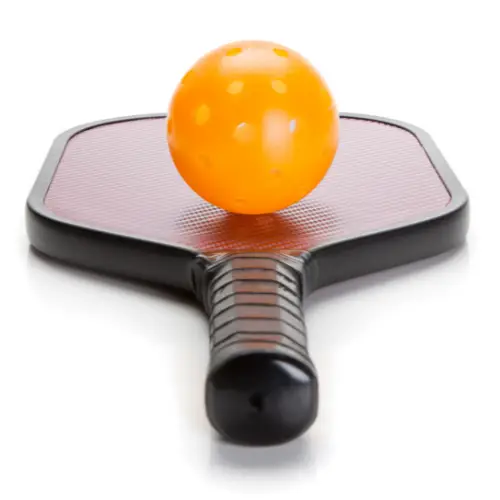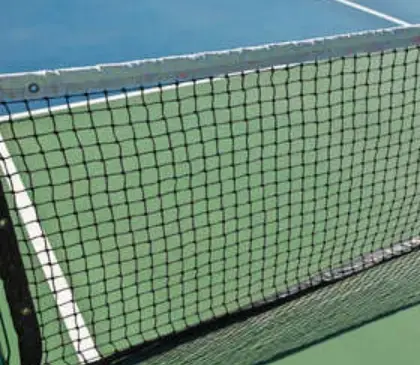Pickleball is a fast-growing racquet sport that is played on a court similar to a badminton or tennis court. It involves a small, perforated plastic ball that is struck back and forth over a high net. The ball is an essential component of the game, and it is important to understand its features and characteristics. In this article, we will delve into all things pickleball balls, including their materials, size, weight, and flight. Whether you are a seasoned pickleball player or a newcomer to the sport, this article will provide valuable insights into the pickleball ball and its role in the game.
History Of The Pickleball Ball
The pickleball ball was invented in the 1960s by Joel Pritchard, Bill Bell, and Barney McCallum, three friends who were looking for a new outdoor game to play. They combined elements of badminton, tennis, and ping pong to create the game of pickleball.
Initially, the ball used for pickleball was a simple wiffle ball, which is a small, lightweight ball with holes in it. However, this ball proved to be too light and easily flew off the court, making it difficult to play.
In the 1970s, the ball was changed to a ball similar to a ping pong ball, but made of a softer material and slightly larger in size. This ball was more suitable for the game and allowed for better and more controlled gameplay.
As pickleball gained popularity, the ball continued to evolve. In the 1980s, the ball became even softer and more bouncy, allowing for even more control and strategy in the game.
Today, the pickleball ball is made of a high-quality, durable material that can withstand the wear and tear of the game. It is also specifically designed for pickleball, with a weight and size that is perfect for the game. The ball is used in both indoor and outdoor games and is available in various colors and designs.
Overall, the pickleball ball has undergone a number of changes since its inception, but it has remained a vital component of the game and has contributed to its popularity and success.
What Are The Size And Weight Comparisons To Other Balls Used In Sports?
Pickleball balls are generally smaller and lighter than other balls used in sports. Here are some size and weight comparisons:
- Pickleball balls are about the size of golf balls, with a diameter of 2.875 inches. They are about 0.1 ounces heavier than golf balls, which weigh about 1.6 ounces.
- Pickleball balls are significantly smaller and lighter than tennis balls, which have a diameter of 2.7 inches and weigh about 2.5 ounces.
- Pickleball balls are also smaller and lighter than basketballs, which have a diameter of 9.5 inches and weigh about 22 ounces.
- Pickleball balls are similar in size to table tennis balls, which have a diameter of about 2.7 inches and weigh about 0.09 ounces. However, table tennis balls are significantly lighter than pickleball balls.
Overall, pickleball balls are relatively small and lightweight compared to other balls used in sports. This allows for easier maneuverability and faster play in the game of pickleball.
What Are The Materials Used In Pickleball Balls?
Pickleball balls are made from one of two materials: polymer or rubber.
Polymer balls are made from a plastic material that is injected into a mold to create the ball shape. They are typically more durable and have a lower bounce than rubber balls.
Rubber balls are made from a natural or synthetic rubber material that is molded into a ball shape. They have a higher bounce than polymer balls and are generally more expensive.
Both types of balls must meet specific size and weight requirements set by the International Federation of Pickleball (IFP). They are also required to have a textured surface to improve grip and control during gameplay.
What Are The Different Types Of Pickleball Balls?
There are three main types of pickleball balls:
- Outdoor balls: These balls are made from a hard, durable plastic material and are specifically designed for outdoor use on concrete or asphalt courts. They are generally more durable and resistant to weather conditions than indoor balls.
- Indoor balls: These balls are made from a softer, more flexible plastic material and are designed for use on indoor wood or synthetic courts. They tend to be less durable than outdoor balls but offer a softer and more controlled game experience.
- High-visibility balls: These balls are designed with a bright and vibrant color scheme, making them easier to see and track during play. They are typically used in low light or outdoor conditions where visibility may be compromised.
What Are The Rules In Using The Pickleball Balls?
- The ball must be made of a polymer or composite material and must be 2.9 inches in diameter and weigh between 0.9 and 1.0 ounces.
- The ball must be hit with a pickleball paddle, which must be made of a solid surface material such as wood, aluminum, or composite.
- The ball must be served diagonally across the court, with the serve starting from behind the baseline on the serving team’s side of the court.
- The ball must be served underhand, with the paddle contacting the ball below the waist.
- The ball must be returned by the receiving team, who must hit the ball back over the net and into the opposite service box.
- The ball may be hit volleys (before it bounces) or groundstrokes (after it bounces).
- The ball may be hit overhand or underhand, but it must be hit with a controlled, gentle stroke.
- The ball may be hit anywhere on the court, but it must be returned over the net and within the boundaries of the opposite court.
- The ball may not be hit out of bounds, and a point is scored if the ball goes out of bounds or is not returned by the opposing team.
- The ball may be hit off the walls and ceiling of the playing area, but it must not touch any objects hanging from the ceiling or walls.
Recap
The article discusses the history and evolution of the ball used in pickleball. The original ball was made of wiffle ball material and had a perforated surface. However, over time, the ball has evolved to be made of harder plastic and has a solid surface with small holes.
The article also discusses the different types of balls available for pickleball, including indoor and outdoor balls. Indoor balls are typically made of a softer material and have a lower bounce, while outdoor balls are made of a harder material and have a higher bounce.
In conclusion, the pickleball ball has evolved over time to become a more durable and efficient tool for the sport. There are various options available for both indoor and outdoor play, and it is important to choose the appropriate ball for the specific surface and level of play.







